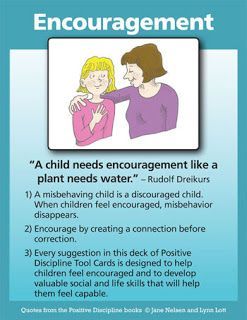Parenting is a complex and challenging journey filled with ups and downs. It is a role that requires immense patience, understanding, and love. However, disciplining children can be particularly tricky, as parents need to find the delicate balance between setting boundaries and nurturing their child’s growth. Positive discipline strategies provide effective ways to guide and teach children while maintaining a healthy parent-child relationship. In this article, we will explore some of these strategies and how they can contribute to effective parenting.
1. Communication is Key
Effective communication forms the foundation of positive discipline. Open and honest communication builds trust and understanding between parents and children. Take the time to have regular conversations with your child, actively listening to their thoughts, feelings, and concerns. By doing so, you create a safe space for your child to express themselves, ultimately facilitating smoother discipline processes. Furthermore, it is essential to communicate expectations and boundaries clearly and assertively. When children know what is expected of them, they are more likely to comply. Avoid yelling or using harsh language as this can create resentment and damage your relationship with your child.
2. Lead by Example
Children often learn by observing their parents’ actions. As a parent, it is crucial to embody the behavior you want your child to emulate. Display empathy, respect, and kindness towards others, as your child will mirror these traits in their interactions. When disciplining your child, remain calm and composed. Losing control of your emotions can escalate the situation and set an unhealthy example for your child. Instead, take a deep breath, gather your thoughts, and respond in a rational and thoughtful manner.
3. Set Clear and Consistent Boundaries
Establishing clear and consistent boundaries is vital for effective discipline. Children thrive with structure and routine, as it provides them with a sense of security and stability. Clearly define your expectations, rules, and consequences and ensure they are communicated to your child. This clarity will prevent any confusion or misunderstandings, minimizing behavioral challenges. It is also crucial to be consistent with discipline. Apply the same consequences for similar behaviors regularly. Inconsistency can confuse children and potentially undermine the effectiveness of your disciplinary actions.
4. Use Positive Reinforcement
Positive reinforcement entails acknowledging and praising your child’s positive behavior. By focusing on the desired behaviors, you motivate and encourage your child to make better choices. Offer sincere and specific praise when your child exhibits appropriate behavior, highlighting the positive impact it has on themselves and others. This fosters a sense of accomplishment and self-esteem in your child, making them more inclined to repeat good behavior. Remember to avoid excessive or insincere praise, as it may diminish its value. Instead, provide constructive feedback and guidance when necessary.
5. Encourage Problem-Solving and Decision-Making
Empower your child by involving them in the decision-making process and encouraging problem-solving skills. When faced with a disciplinary situation, allow your child to express their thoughts and opinions. This demonstrates that their input is valuable, fostering a sense of responsibility and ownership. Guide your child to think critically about the consequences of their actions and help them explore alternative solutions. By involving them in problem-solving, you are teaching valuable life skills that will serve them well into adulthood.
6. Practice Time-In Instead of Time-Out
While time-outs have traditionally been a popular disciplinary strategy, the concept of time-in offers a more positive approach. Instead of isolating your child, time-ins involve taking a break together to calm down, reflect, and reconnect emotionally. During a time-in, sit down with your child, validate their emotions, and offer support and comfort. Use this opportunity to help them understand their behavior, explore alternative choices, and work towards a resolution. Time-ins promote emotional intelligence, empathy, and a stronger parent-child bond.
7. Teach Life Lessons
Discipline should serve as a teaching tool that imparts valuable life lessons to your child. Rather than focusing solely on punishment, use disciplinary moments as an opportunity for growth and learning. Help your child understand the consequences of their actions, encouraging them to make better choices in the future. It is important to remember that discipline is not about shaming or belittling your child but providing guidance and facilitating their development. By adopting a positive approach, you create a nurturing environment conducive to emotional and behavioral growth.
Conclusion
Positive discipline strategies can transform the way you approach parenting. By prioritizing open communication, setting clear boundaries, and leading by example, you establish a healthy parent-child relationship based on trust, respect, and empathy. With consistent practice of positive reinforcement, problem-solving, and time-ins, you can create an environment that fosters emotional intelligence and cultivates responsible and self-aware individuals. Remember, effective parenting is a journey that requires patience and continuous learning, but with positive discipline, you can navigate it with confidence and grace.
